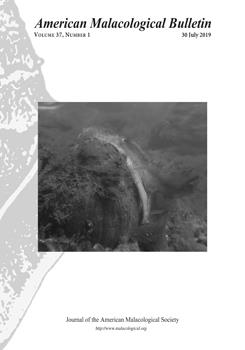Freshwater mussels (order Unionida) are a historically abundant component of North American freshwater ecosystems, yet are among the most imperiled faunal groups. Understanding the underlying genetic structure and how it relates to historical geographic changes is critical for development of effective conservation strategies. Here we analyze mitochondrial gene fragments (COI) and 6 microsatellite loci of the freshwater mussel Lampsilis cardium (Rafinesque, 1820) in the Great Lakes and Mississippi River drainages to assess phylogenetic structure. The mitochondrial phylogeny shows geographic structure, with one divergent clade found exclusively in the Maumee and Wabash River. Phylogenies created using the COI sequences indicate divergence between two distinct clades of putative L. cardium (uncorrected p distance = 5.22%). Results from the microsatellite analyses suggest two genetically distinct populations corresponding to at least two glacial refugia, similar to the genetic structure observed for some other freshwater mussels in the region and are largely consistent to the results of mtDNA dataset. Three COI sequences from putative L. ovata (Say, 1817) were obtained from other published studies and included the phylogenetic analysis, these rendered the sequences from putative L. cardium generated in this study non–monophyletic. This suggests that more work is needed to determine whether L. cardium and L. ovata represent two distinct species or represent two divergent populations. Despite the highly divergent COI haplotypes in two monophyletic clades, nuclear microsatellite markers failed to detect differences in allele frequencies between individuals from these two clades in regions where they co–occur (FST = 0.004). These data aid in conservation strategies for unionids, providing guidance of best practices for maintaining natural genetic structure.
BioOne.org will be down briefly for maintenance on 17 December 2024 between 18:00-22:00 Pacific Time US. We apologize for any inconvenience.
How to translate text using browser tools
30 July 2019
Population Genetic Analyses of Lampsilis cardium (Bivalvia: Unionida) Reveal Multiple Post–Glacial Colonization Routes into the Great Lakes Drainage
Trevor L. Hewitt,
Daelyn A. Woolnough,
David T. Zanatta
ACCESS THE FULL ARTICLE

American Malacological Bulletin
Vol. 37 • No. 1
July 2019
Vol. 37 • No. 1
July 2019
freshwater mussels
hybridization
microsatellites
mtDNA
population genetics




